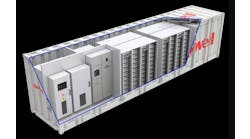Over the last few years, the industrial sector developed a heightened awareness of methane emissions—and for good reason. Methane is 27-30 times more potent than carbon dioxide when it comes to affecting Earth’s atmosphere, making it a large contributor to global warming.
“One of the reasons there’s such an emphasis on methane—besides the fact that it absorbs more heat than carbon dioxide—is it’s shorter-lived in our atmosphere, so it’s one of those gases that, if tackled as an industry, we can see meaningful change in our lifetimes,” said Robert Kester, CTO for emissions solutions at Honeywell Process Solutions, during a presentation by the company in October.
There are several tailwinds propelling action on methane emissions, particularly in the oil and gas sector, according to Kester. Oil and gas producers understand they face stricter regulations and desire to voluntarily set their own goals and commitments to methane emissions reduction. Getting there has its share of headwinds, however.
Among the challenges are current technology solutions. “One of the overarching challenges we’ve seen is that many approaches are very manual,” Kester said. That’s particularly true of the two most popular methods for methane monitoring and leak detection in the oil and gas industry. The first, Method 21, was introduced in 1981 by the EPA, and requires using specialized, volatile organic compound (VOC) analyzers to test for leaks. It’s a manual process with workers using a wand to check every component or leak source. The second approach is using handheld cameras that let workers visually look for leaks.
However, manual approaches are labor-intensive and costly, and can lead to inaccurate data that presents only a snapshot in time of potential leaks. Also, they offer limited ability to classify emissions by type. “There’s just a tremendous amount of effort on data collection and reporting, but even when that’s done, there’s a lot of uncertainty about your overall emissions profile,” Kester said.
Honeywell set out to rethink this leak detection paradigm, and get data collection and reporting into an automated and operations-focused process. Kester said the company is developing technology and software that enables automation and quantification, and lets users move “from the back seat to the driver’s seat in their emissions journey.”
Continuous streams of data
The first step in making the emissions measuring process more dynamic is continuous measurement and monitoring. Honeywell developed new instrumentation with that goal in mind. Its initial solution is Versatilis Signal Scout, which uses molecular property spectrometer technology to deliver rapid, sensitive and continuous methane detection.
Kester said Versatalis Signal Scout is one of the first hazardous area-certified gas sensors that can be deployed in the heart of operations. The devices “sniff” for gas much like the manual wands currently used. However, they offer GPS location, communications (wireless LoRa gateway), and battery- and solar-powered energy sources.
“We’ve taken manual sniffing and made it deployable,” Kester said. “We also added weather-monitoring.”
This weather monitoring lets users account for wind and how it blows gas molecules that might indicate a leak. Honeywell’s software can use advanced analytics and fluid-dynamic models to locate leaks and estimate how much gas has leaked.
Reinventing the camera method
The other technology Honeywell set out to improve is manual leak detection with cameras. The company turned to NASA technology that determines the composition of galaxies, according to Kester.
Hyperspectral imaging (HSI) was turned into a camera system that can be deployed on the perimeter of a facility to visually monitor emissions. A software solution provided by Honeywell not only feeds visual data for users to monitor, but also adds data from the historian. “We’re pulling all the different types of data into one place,” Kester said. “Operators can view it similarly to how they view process data to start looking at correlations of signals.”
The process, Kester adds, is taken up a notch from current concepts of emissions monitoring. This new process eliminates the time to acquire data and analyze it. It makes decisions about how to act on the emissions data of a plant or drilling operation more quickly and precisely, according to Kester.





